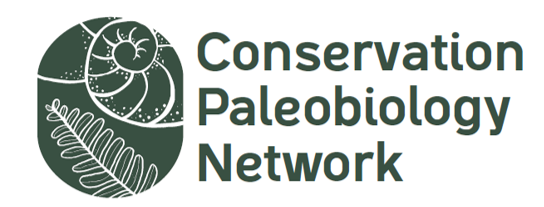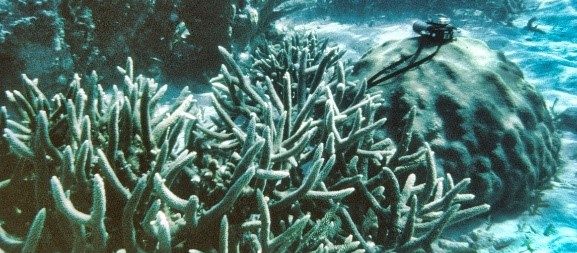Human activities disrupted Caribbean corals before disease and bleaching (By Katie Cramer):
If coral reefs are the rainforests of the sea, then corals from the Acropora genus are the tall canopy trees. Acroporids typically grow much faster and taller than other corals and play an outsized role in reef habitat complexity and carbonate production. Although Indo-Pacific reefs contain about 150 Acropora species, Caribbean reefs only contain two: the branching elkhorn (A. palmata) and staghorn corals (A. cervicornis). These two corals therefore have VIP status on Caribbean reefs.
When researchers first began to intensively study Caribbean reefs in the late 1970s, many shallow reef zones were dominated by extensive thickets of elkhorn and staghorn colonies. Less than a decade later, these researchers began reporting Acropora die offs across the Caribbean. These deaths have been mainly attributed to regional and global disturbances, including outbreaks of disease affecting Acropora and algae-controlling sea urchins, coral bleaching from warming oceans, and strong hurricanes intensified by climate change. Today, over 80% of the populations of elkhorn and staghorn corals have been lost, and these corals are listed as critically endangered under the U.S. Endangered Species Act.
What are the root causes of the disappearance of Caribbean acroporid corals? The lack of baseline ecological data prior to the 1970s has prevented a full accounting of the timing and mechanisms of change. For example, paleoecological, archeological, and historical data show that humans have been negatively impacting Caribbean reefs via fishing and land-based pollution for centuries or more. Did these local human impacts play a role in Acropora loss?
To help resolve this, we compiled a large dataset of paleoecological, historical, and modern survey data to track the presence and dominance of elkhorn and staghorn corals over the past 125,000 years across the Caribbean. We found that these corals first began declining in the 1950s and 1960s, one to four decades before outbreaks of coral and urchin disease and coral bleaching.
This early timing implies that longer-standing local stressors such as fishing and land-based pollution (rather than coral disease and bleaching) initiated Acropora loss. In fact, Caribbean Acropora corals were relatively rare by the onset of coral bleaching: the proportion of sites dominated by elkhorn and staghorn coral had already declined from 78 to 22% and 63 to 4% since the Pleistocene!
Relating trends in Acropora dominance since the 1950s to a suite of potential stressors confirmed the role of local human activities. Although ocean warming and hurricanes did not affect Acropora dominance, elkhorn coral dominance was affected by human population density and fertilizer usage. These results have direct conservation and management implications. The recovery plan required for Acropora under the Endangered Species Act cites coral disease, hurricanes, and coral bleaching as the primary drivers of Acropora loss and the main threats to their recovery, whereas our work demonstrates the major role of local human activities. Therefore, management bodies need to critically re-assess the full range of threats to Caribbean Acropora recovery and must prioritize and enforce the mitigation of local stressors alongside climate change.
For more details please see article by Cramer and colleagues in Science Advances: DOI:10.1126/sciadv.aax9395


